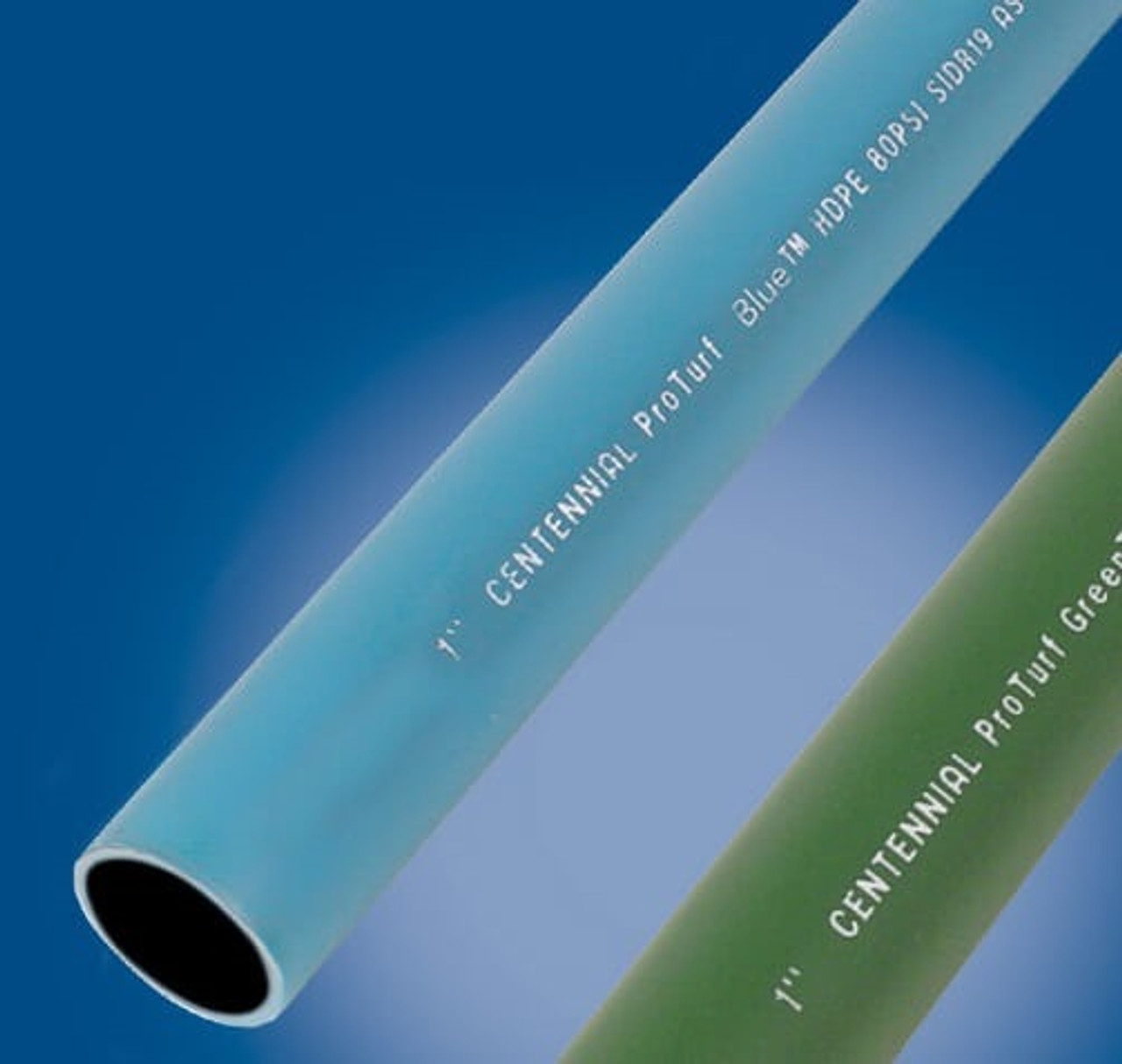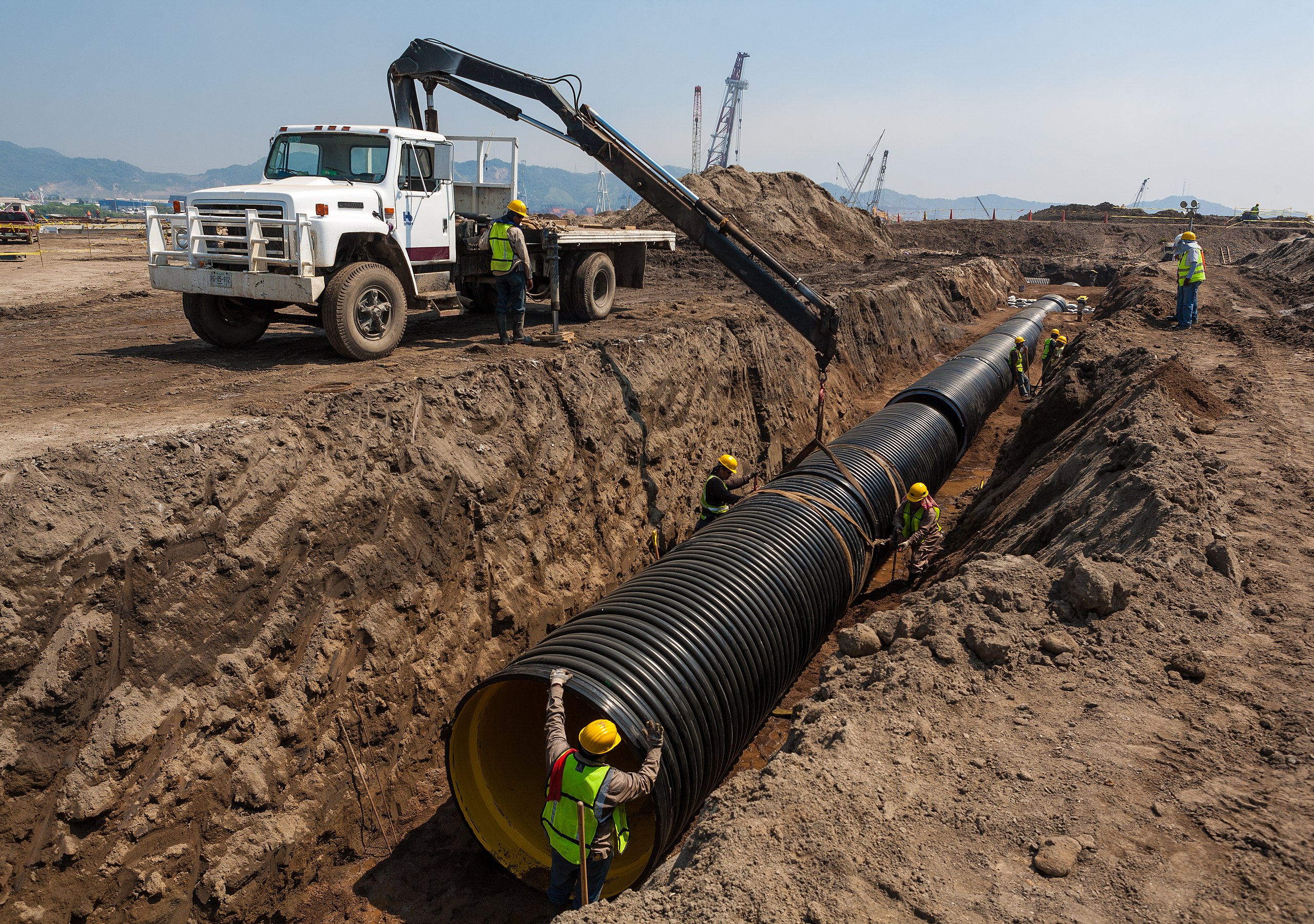Discover the Production Process Behind High-Quality HDPE Pipeline and Its Applications
The production process of top notch HDPE pipelines is intricate and methodical. It begins with the selection of basic materials that improve efficiency. Following this, ethylene undergoes polymerization to form resin, which is after that formed via extrusion. Quality control is paramount, making certain that the end product meets rigorous requirements. The journey of HDPE pipes doesn't end with production. Their applications throughout numerous industries reveal a wider significance worth checking out.
Understanding HDPE: Characteristics and Advantages

High-density polyethylene (HDPE) is a functional polycarbonate recognized for its toughness and resistance to different environmental elements. This material exhibits excellent tensile toughness, making it ideal for demanding applications. Its low-density structure adds to a light-weight item, assisting in convenience of taking care of and installment. HDPE additionally showcases amazing resistance to chemicals, which reduces degradation when revealed to extreme substances.
The product's reduced wetness absorption further boosts its durability, making it suitable for usage in pipes and storage containers. Furthermore, HDPE is immune to ultraviolet (UV) radiation, ensuring that items preserve their honesty even when subjected to sunlight. Its adaptability permits for the production of elaborate forms without compromising strength. The environmentally friendly nature of HDPE, frequently stemmed from recycled materials, contributes to its charm, promoting lasting practices in manufacturing. Overall, these residential or commercial properties and advantages make HDPE a preferred option for numerous commercial and consumer applications.
Raw Material Selection for HDPE Production
The choice of basic materials for HDPE manufacturing is necessary to validate the last product fulfills the wanted specifications and quality criteria. High-density polyethylene (HDPE) is primarily created from polymerized ethylene, stemmed from fossil gas such as all-natural gas or petroleum. The top quality of these feedstocks considerably affects the mechanical and thermal residential properties of the final HDPE.
Ingredients also play a significant duty in enhancing HDPE's efficiency, consisting of anti-oxidants, UV stabilizers, and colorants, which improve resilience and resistance to environmental aspects. The choice process should think about not only the chemical structure of the raw products however also their handling features to assure effective manufacturing.
The sourcing of raw materials should focus on sustainability and compliance with environmental policies, as responsible practices are necessary in today's market. Inevitably, careful basic material selection lays the structure for creating premium HDPE pipes ideal for diverse applications.
The Extrusion Refine: Shaping HDPE Pipe
The extrusion process plays an important role fit HDPE pipes, beginning with thorough material prep work techniques that assure suitable flow and uniformity. Similarly essential is the layout of the die, which directly affects the final measurements and surface high quality of the pipeline. With each other, these aspects contribute considerably to the efficiency and top quality of HDPE pipe manufacturing.
Product Preparation Techniques
Effective manufacturing of HDPE pipes starts with thorough material prep work techniques, especially the extrusion procedure. During this phase, high-density polyethylene resin is first dried to eliminate wetness, guaranteeing suitable flow characteristics. The resin is then fed into the extruder, where it undertakes home heating and melting, transforming into a viscous state. This home heating process is thoroughly regulated to maintain the product's honesty and efficiency. The liquified HDPE is forced with a die, forming it right into a continual pipeline form. Appropriate temperature monitoring throughout extrusion is vital, as it straight impacts the product's buildings and the final product high quality. Once shaped, the HDPE pipeline is cooled down and cut to specified lengths, all set for subsequent processing and applications.
Die Layout Importance
Precision in die design plays an essential function in the extrusion procedure of HDPE pipes. The die works as the final shaping tool, directly affecting the pipeline's dimensions, wall surface density, and surface finish. A properly designed die warranties consistent product flow, minimizing defects such as irregularities and weak points. The geometry of the die need to be maximized to accommodate the specific residential or commercial properties of HDPE, including its thickness and thermal actions during extrusion. In addition, the cooling price of the material as it travels through the die can noticeably affect the pipe's architectural integrity. As a result, investing in innovative die modern technology is crucial for producers aiming to produce high-grade HDPE pipes that fulfill industry criteria and customer assumptions.
Quality Assurance Actions in HDPE Manufacturing
Although different aspects affect the quality of HDPE pipeline production, reliable quality assurance procedures are important to assure uniformity and integrity in the final product. Secret quality control practices include extensive product examination, confirming that the raw polyethylene satisfies recognized requirements for pureness and thickness. During the extrusion process, specifications such as temperature, pressure, and cooling time are very closely monitored to maintain dimensional accuracy and structural stability
Furthermore, post-production testing is necessary; producers typically carry out hydrostatic tests to assess the pipe's Discover More strength and resistance to pressure. Aesthetic assessments for surface area defects even more boost quality control. Qualification from pertinent requirements companies, like ASTM or ISO, offers an extra layer of credibility. By implementing these thorough quality assurance procedures, producers can minimize issues, enhance efficiency, and guarantee that the HDPE pipelines satisfy the specific requirements of numerous applications, eventually leading to client satisfaction and rely on the product.
Applications of HDPE Pipe Throughout Industries
HDPE pipes are utilized throughout various markets due to their durability and adaptability. In water distribution systems, they guarantee effective shipment, while in wastewater administration, they supply trusted solutions for waste transport. In addition, farming watering networks take advantage of HDPE's resistance to corrosion and flexibility, making it a perfect selection for modern farming techniques.

Water Circulation Solutions
A significant variety of industries count on high-density polyethylene (HDPE) pipes for reliable water circulation systems. Recognized for their longevity and resistance to deterioration, HDPE pipes are extensively utilized in metropolitan water networks, farming watering, and industrial applications. Their lightweight nature helps with very easy handling and installation, lowering labor expenses and time. Additionally, HDPE pipelines can fit different stress degrees, making them appropriate for both reduced and high-pressure systems. Midland TX HDPE Pipe Fittings in Stock. The flexibility of the product enables smooth integration into existing framework, reducing the demand for substantial excavation. HDPE's resistance to chemical seeping guarantees that the water provided continues to be secure and clean, making it a suitable selection for maintaining the high quality of potable water across numerous sectors.
Wastewater Monitoring Solutions
Effective water distribution systems likewise lead the way for innovative wastewater administration options, where high-density polyethylene (HDPE) pipes play a considerable function. Prominent for their resilience and resistance to rust, HDPE pipes are perfect for moving wastewater in different setups. Their versatility enables for simple setup in intricate environments, lessening the demand for substantial excavation. Furthermore, HDPE's smooth indoor surface decreases friction, improving flow prices and effectiveness. These pipelines are additionally resistant to chemical leaching, guaranteeing that contaminants do not compromise the surrounding setting. Industries, districts, and treatment centers increasingly rely upon HDPE pipelines for their reliability and longevity, making them a favored selection for modern-day wastewater monitoring systems. This flexibility underscores the critical significance of HDPE pipelines across numerous click this link applications.
Agricultural Irrigation Networks
Agricultural irrigation networks benefit significantly from making use of high-density polyethylene (HDPE) pipes, which give reliable and reliable water delivery to crops. HDPE pipes are lightweight, making them easy to transfer and install, while their flexibility enables various configurations in diverse surfaces. These pipes demonstrate excellent resistance to corrosion, chemicals, and UV radiation, ensuring sturdiness in rough farming settings. Furthermore, their smooth interior surface area reduces friction loss, optimizing water circulation and decreasing power expenses related to pumping. The durability of HDPE pipes, typically going beyond half a century, contributes to lower upkeep and substitute expenditures. Subsequently, farmers progressively depend on HDPE pipelines to boost irrigation efficiency and advertise sustainable farming methods, ultimately bring about enhanced plant yields and source conservation.
Future Trends in HDPE Pipeline Innovation
As the need for lasting and reliable facilities expands, improvements in HDPE pipe modern technology are poised to change different industries. Emerging trends include the assimilation of wise modern technologies, such as sensors and IoT capacities, which assist in real-time surveillance of pipe problems, decreasing maintenance expenses and preventing leakages. Additionally, the advancement of sophisticated production strategies, such as 3D printing, is allowing the manufacturing of complex, tailored pipeline layouts that cater to particular task needs.
The focus on recycling and circular economic climate methods is driving the technology of HDPE pipelines made from recycled materials, boosting sustainability. Enhanced jointing methods, such as electro-fusion and mechanical installations, are additionally enhancing installment efficiency and dependability. Ultimately, the expanding emphasis on environmental policies is pressing suppliers to adopt greener production procedures, making certain that HDPE pipes not only satisfy industry requirements yet also cultivate a more sustainable future for facilities advancement.
Frequently Asked Questions
How Does HDPE Compare to Other Plastic Materials?
HDPE outshines several other plastic products pertaining to durability, chemical resistance, and adaptability. Its reduced density and high tensile toughness make it ideal for numerous applications, often going beyond options in both performance and long life.
What Are the Environmental Impacts of HDPE Manufacturing?
The environmental effects of HDPE production consist of greenhouse gas discharges, energy usage, and prospective pollution from making processes. In addition, incorrect disposal can result in dirt and water contamination, increasing concerns regarding lasting eco-friendly effects.
Can HDPE Water Lines Be Recycled?
Yes, HDPE pipelines can be recycled. Several facilities underground water line installation approve used HDPE for handling, changing it into brand-new items. This recycling adds to sustainability initiatives, lowering plastic waste while saving sources and energy in the manufacturing cycle.
What Is the Life Expectancy of HDPE Piping?

How Do Temperature Level Variants Affect HDPE Pipeline Efficiency?
Temperature level variants greatly influence HDPE pipe performance, affecting flexibility and stamina. High temperature levels can result in softening, while reduced temperatures may trigger brittleness, eventually affecting the pipe's longevity and suitability for various applications in diverse atmospheres.